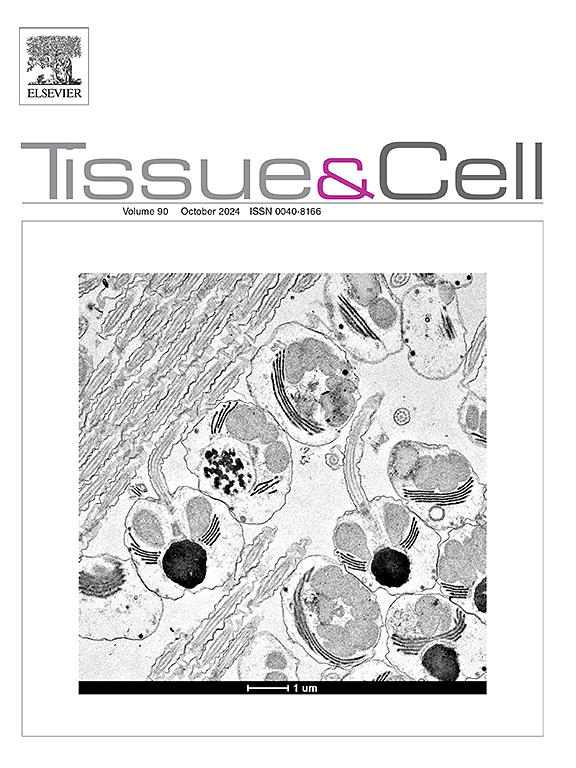The therapeutic effect of Astaxanthin on drill-induced closed femoral fracture model in male Wistar rats
IF 2.7
4区 生物学
Q1 ANATOMY & MORPHOLOGY
引用次数: 0
Abstract
Purpose
Bone fracture is one of the most significant injuries of the body, which is usually caused by trauma. Astaxanthin (AST) showed beneficial effects on inflammation and oxidative stress, indicating protective effects on bone tissue. This study was performed with the aim of evaluating the effect of AST on the improvement of behavioral changes and the ossification process in the defect created in the femur of the rats.
Methods
Animals were randomly divided into 3 groups, sham (healthy), control (bone fracture), and treatment. The sham group received water and normal food. In the control group, the fracture of the femur (3 holes) was done through a dental drill. A group of animals was treated daily with AST (1 mg/kg) by intraperitoneal injection (i.p.) 24 h after surgery for 3 weeks.
Results
Behavioral tests (open field test and grid walk test) showed increased movement inconsistency and balance in the control group compared to the sham group. At the same time, treatment with AST for 3 weeks improved movement disorders in behavioral tests. The results of histological analysis and radiography showed that the treatment with AST led to decreased inflammation and necrosis and increased bone optical density. Fracture caused elevation in the levels of oxidative stress marker (MDA) as well as the pro-inflammatory cytokine (TNF-α and (IL-1β). However, treatment with AST reversed it.
Conclusions
Based on the results from this study, AST, as an anti-inflammatory, and an antioxidant therapeutic agent, has therapeutic effects on bone fractures.
虾青素对雄性Wistar大鼠钻孔致闭合性股骨骨折模型的治疗作用
目的骨折是人体最重要的损伤之一,通常由外伤引起。虾青素(AST)对炎症和氧化应激均有有益作用,提示其对骨组织具有保护作用。本研究旨在评价AST对大鼠股骨缺损行为改变和骨化过程的改善作用。方法将动物随机分为3组,假手术组(健康组)、对照组(骨折组)和治疗组。假手术组只给予水和正常食物。对照组用牙钻完成股骨骨折(3孔)。一组动物术后24 h每日腹腔注射AST(1 mg/kg),连续3周。结果行为学测试(空地测试和网格行走测试)显示,与假手术组相比,对照组的运动不一致性和平衡性有所增加。同时,AST治疗3周后,行为测试中的运动障碍得到改善。组织学分析和影像学检查结果显示,AST治疗导致炎症和坏死减少,骨光密度增加。骨折导致氧化应激标志物(MDA)和促炎细胞因子(TNF-α和IL-1β)水平升高。然而,AST治疗逆转了它。结论AST具有抗炎、抗氧化治疗骨折的作用。
本文章由计算机程序翻译,如有差异,请以英文原文为准。
求助全文
约1分钟内获得全文
求助全文
来源期刊

Tissue & cell
医学-解剖学与形态学
CiteScore
3.90
自引率
0.00%
发文量
234
期刊介绍:
Tissue and Cell is devoted to original research on the organization of cells, subcellular and extracellular components at all levels, including the grouping and interrelations of cells in tissues and organs. The journal encourages submission of ultrastructural studies that provide novel insights into structure, function and physiology of cells and tissues, in health and disease. Bioengineering and stem cells studies focused on the description of morphological and/or histological data are also welcomed.
Studies investigating the effect of compounds and/or substances on structure of cells and tissues are generally outside the scope of this journal. For consideration, studies should contain a clear rationale on the use of (a) given substance(s), have a compelling morphological and structural focus and present novel incremental findings from previous literature.
 求助内容:
求助内容: 应助结果提醒方式:
应助结果提醒方式:


